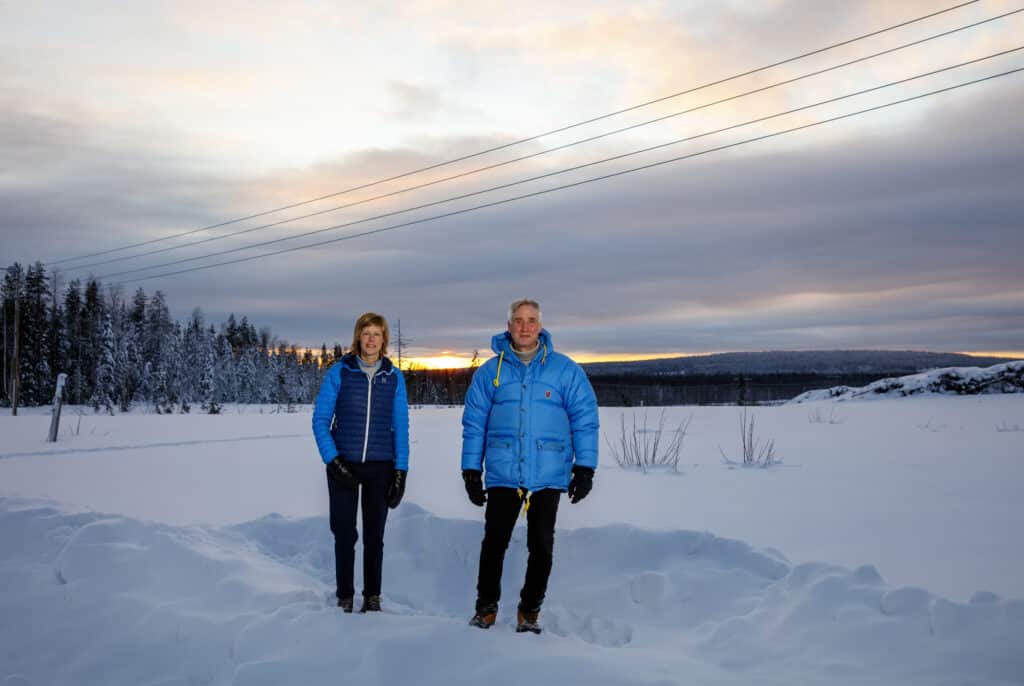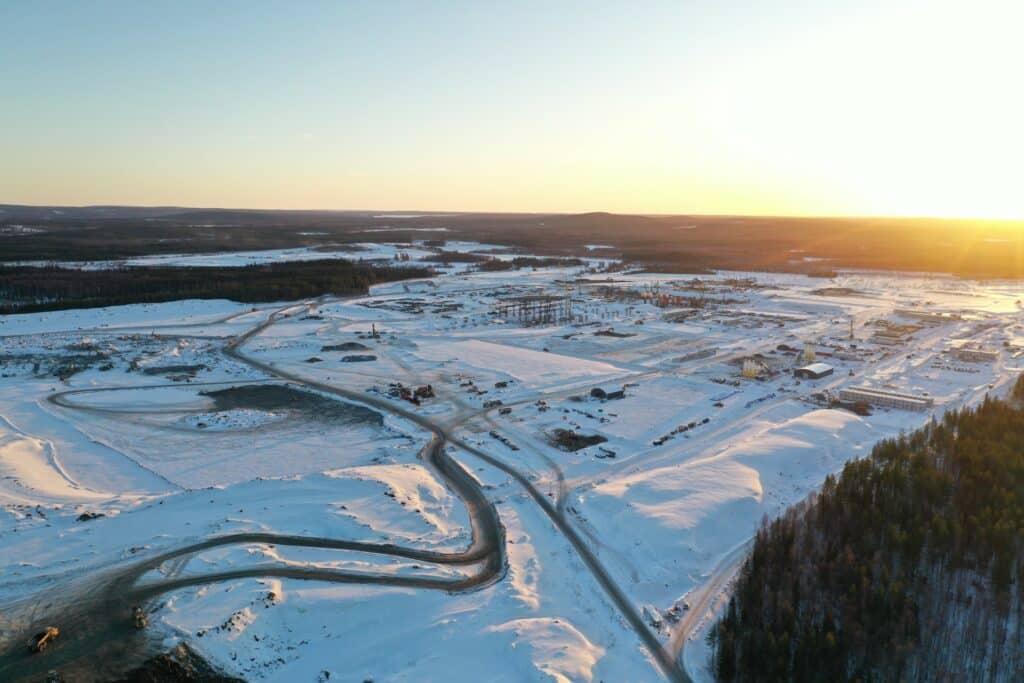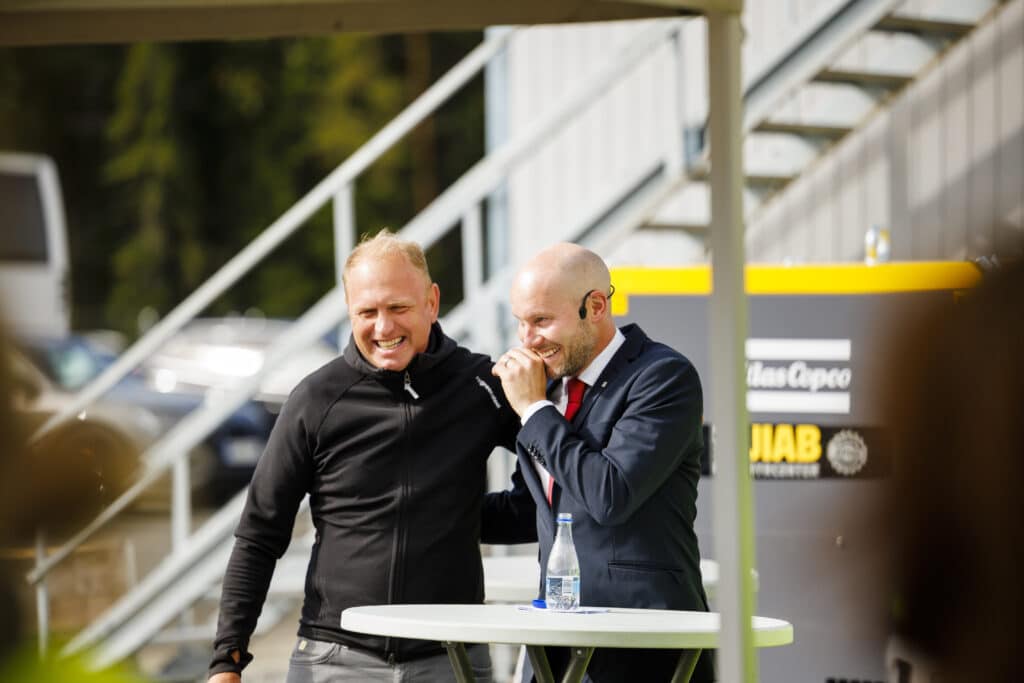Stegra’s decision to establish its large-scale green steel initiative in Boden was no coincidence. Researcher Viktor Salenius from Oxford University’s Saïd Business School has spent three years investigating the factors that have positioned Boden and Luleå as pivotal actors in the global industrial transition.
As the global shift towards sustainable industry accelerates, Boden once again emerges as a focal point for international interest. Viktor Salenius, a researcher at Oxford University’s business school, has been studying Stegra in Boden and Hybrit in Luleå since 2021 as part of his research on corporate models for energy-intensive industrial transformation. His work provides deep insights into the structural and strategic factors underpinning their operations.
The research is based on extensive empirical data, including site visits and more than 100 formal interviews. By analyzing success factors and innovation strategies, Salenius compares the business models of these two pioneering companies in green steel production and highlights the critical role played by the local community and national policy frameworks in facilitating industrial transformation.
Key success factors
A defining element in the success of Boden and Luleå is their proactive and strategic approach to industrial development. Long before large-scale projects materialized, the municipalities had taken preparatory steps to create favorable conditions for new industrial establishments. Previous experience with smaller initiatives, such as data centers, laid the groundwork for the major investments currently taking place.
“The fundamental reason these projects are being realized here lies within the local community. There has been a foresighted and long-term commitment that has made this possible—not only in Boden and Luleå but across several locations in northern Sweden,” says Viktor Salenius.
A distinguishing feature of the region’s industrial transformation is the close collaboration between businesses and public institutions. In Boden, the municipality, Stegra, and its partners have worked together to address critical challenges, including regulatory processes, talent attraction, infrastructure expansion, and housing development. According to Salenius, these coordinated efforts are essential to maintaining momentum in the transition.
“This collaborative model stands out when compared to similar industrial transformations globally. The companies themselves recognize it as a key driver of success,” he notes.


 Previous experience from smaller projects, such as data centers, has laid the foundation for the large-scale development that is now taking place. For Boden, this meant the creation of Boden Industrial Park, which then became crucial when Stegra chose the site.
Previous experience from smaller projects, such as data centers, has laid the foundation for the large-scale development that is now taking place. For Boden, this meant the creation of Boden Industrial Park, which then became crucial when Stegra chose the site.
Challenges and opportunities
Despite notable successes, Salenius also identifies significant challenges, particularly regarding the role of the state. He argues that government support for local communities has not been sufficiently proactive or comprehensive to address the complex demands of rapidly growing industrial regions. A lack of early-stage investments in infrastructure and resources has, for example, made it more difficult to meet the evolving needs associated with large-scale industrial establishments.
However, Salenius also sees long-term opportunities emerging from the ongoing transition. By fostering a regional labor market where Luleå and Boden complement one another, the area can reduce its dependency on a single industry and build a more resilient economic ecosystem.
“This transition has the potential to create a dynamic innovation system where industry and society evolve together. It is a model from which other regions can draw valuable lessons,” he states.
Salenius describes northern Sweden’s industrial transformation as unique in a global context. The extent to which societal involvement is prioritized in the transition is particularly notable when compared to international benchmarks.
“If there is a Nordic model for industrial transformation, this is where it is most clearly articulated. The cooperation between industry, local government, and regional stakeholders is a distinguishing factor,” he concludes.
 The close cooperation between companies, local communities and the region is a success factor that stands out. Viktor Salenius believes that it is a model that others will want to learn more about and follow.
The close cooperation between companies, local communities and the region is a success factor that stands out. Viktor Salenius believes that it is a model that others will want to learn more about and follow.
Implications for Boden
Salenius’ research underscores the importance of continued investment in collaboration and sustainable development—both to support current industrial establishments and to address future challenges.
His findings clearly indicate that Boden is not merely a site for green industrial development; it also serves as a model for how future societies can be shaped through strategic cooperation between industry and local governance structures.
“The strength of collaboration is evident. Even between Stegra and Hybrit, there are multiple areas of cooperation on shared challenges such as infrastructure and talent attraction. While they are business competitors, their coexistence and parallel timelines have fostered positive developments for both the companies and the broader region.”
Fact box: Conclusions from the research
How are new business models for energy-intensive industrial transformation structured?
Stegra and Hybrit represent two innovative business models that integrate established industrial expertise with emerging technological solutions and stringent sustainability requirements. These models do not follow a linear innovation trajectory but rather blend legacy methods with new approaches, local and global value chains, and traditional corporate structures with modern, sustainability-driven strategies. By anchoring their projects in existing markets while simultaneously developing new ones, they are laying the foundation for fossil-free steel production at an industrial scale.
Regional collaboration between Stegra and Hybrit, though informal, has been instrumental in their success—particularly in areas such as infrastructure development, where strategic alignment of long-term plans has proven beneficial.
Moreover, the companies have indirectly benefited from each other’s progress. Stegra’s rapid advancements and ambitious timelines have influenced Hybrit’s own development pace, creating pressure and incentives for accelerated deployment of fossil-free technologies. Simultaneously, Hybrit’s extensive research and development efforts have validated the feasibility of fossil-free steel production, strengthening Stegra’s credibility with investors and customers. This interplay between competition and cooperation establishes a distinctive model for driving industrial transformation in energy-intensive sectors.
What is the role of local communities and regions in supporting an energy-intensive industrial transition?
Local and regional actors play a pivotal role in industrial transformation, particularly in areas such as infrastructure planning, energy systems, and workforce development. Municipalities like Boden and Luleå have proactively invested in these areas to facilitate the establishment of industries such as Stegra and Hybrit. Through ongoing dialogue, public engagement initiatives, and strategic collaboration with industry stakeholders, local governments have built trust and fostered widespread support for these developments.
Past experience with smaller-scale projects, such as data centers, has also contributed valuable institutional knowledge, enhancing the region’s capacity to manage large industrial investments effectively.
At the same time, rapid industrial expansion presents significant challenges. The influx of new residents necessitates extensive housing development, expansion of municipal services, and careful management of social dynamics—all of which place substantial demands on local resources. Regional collaboration, particularly between Boden and Luleå, has been critical in mitigating these pressures by fostering a diversified labor market and a more resilient industrial ecosystem. Despite these challenges, the evidence suggests that long-term strategic planning, strong community engagement, and adaptive governance are key factors in successfully managing the green transition.
What is the role of the state in supporting an energy-intensive industrial transition?
The role of the state is in many ways crucial to enabling energy-intensive industrial transitions, but also appears in some respects to be insufficient and unclear given the scale of the ongoing transition. Historically, the state has had a more active leadership role in major industrial investments, but in today’s transition, responsibility has largely shifted to regions and municipalities. Challenges include a lack of support and unclear processes in the early stages of the transition, for example to secure infrastructure and resources that are key to the success of projects.
Although some important progress has been made, such as a more active dialogue on power capacity, financial support from the Swedish Energy Agency and Industriklivet, and the establishment of the Industrial Transition Acceleration Office, it is highlighted that current government tools do not yet fully respond to the diversity of needs faced by industry, municipalities and regions.
At the same time, the role of the state in this transition is unusually complex, as energy-intensive industry requires the coordination of a multitude of actors and sectors. In addition to financial contributions, the state has to deal with issues around energy systems, regulation, climate targets and national competitiveness, often with conflicting interests. The diversity of objectives – from decarbonization to economic growth and regional development – makes it difficult to provide a clear direction. This differs from previous initiatives, which had more defined objectives and simpler processes. Therefore, active strategic coordination between authorities (both nationally and regionally) and a high level of adaptability in government processes and decisions around the industrial transition are particularly needed.